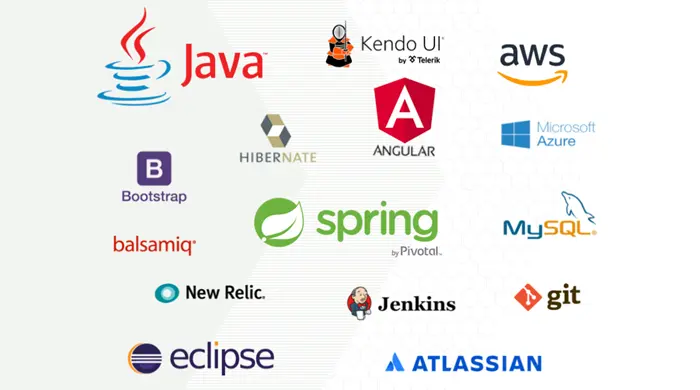How much does the hospital information system cost?
Let me be clear that these are just average numbers. Your hospital information system can be much lower or higher, depending on the development quality, project complexity and your requirements. Keep in mind that in addition to paying for the software, you also have to pay for development tools, maintenance fees, software updates and training fees.
There are 2 ways to attain an HIS. On average, a simple HIS serving one platform can cost $50,000 to $120,000. This figure can range from $150,000 to $300,000 for a more complex system serving cross-platforms. For large hospital, it can even go up to multi millions.
An off-the-shelf or SaaS HIS subscription can cost between $200 to $3,000 monthly. Despite being affordable, it lacks flexibility and scalability and poses a risk of vendor lock-in, which urges many facilities to choose the second method: Building one from scratch.
In short, HIS development costs depend on many factors, which we will break down below so you can estimate them yourself. Alternatively, you can talk to an expert on HIS and get a more accurate quote.
Analyze the cost factors of hospital information system
Number of features
HIS is a complex system consisting of many modules, each module will handle different tasks. Since you can select which modules to add and which not, the more features, the higher the cost.
Here are some of the common modules and features that every HIS should have:
| For Doctors/ Staff | For Administration | For Patients |
|---|---|---|
|
|
|
The module is highly flexible and compact. If a requirement arises, a module can be swiftly designed and integrated into the system at a reasonable cost. Some modules, such as EMR/EHR or telehealth can cost more than basic modules such as appointment scheduling.
However, not all modules cost the same. Core modules like EMR/EHR, LIS, RIS or Telehealth usually require extensive data processing, interoperability and compliance with strict regulations, making them far more expensive than simpler modules like appointment scheduling or billing. For example:
- Appointment scheduling might cost only a few thousand dollars to develop.
- EMR/EHR modules can cost $50,000 to $150,000, depending on the level of customization, interoperability and security requirements.
- Telehealth and e-prescription modules can cost $30,000 to $100,000, since they require real-time video, secure communication and integration with pharmacies.
In addition to development, hospitals must also budget for maintenance and updates. Each added module increases complexity, testing effort and long-term support costs. For instance, integrating multiple clinical modules requires regular updates to keep them aligned with medical standards (HL7, FHIR) and regulatory compliance.
Another important consideration is scalability. Adding too many modules at once may inflate initial costs, but implementing them gradually over time can spread out spending while still ensuring the HIS grows alongside hospital needs. Some vendors also provide modular pricing, where you pay per module or per user, which can make costs more predictable.
Finally, introducing advanced features inside modules – such as AI-powered decision support within EMR or advanced analytics in LIS, can multiply the cost significantly but may generate higher ROI in terms of efficiency and quality of care.
Technology stack
Your chosen programming languages, frameworks and databases will directly affect the HIS cost. The same software with similar functions but using different technology stack and software architecture will have different costs.
For example, opting for open-source frameworks and databases can reduce licensing fees but may require higher spending on security hardening and ongoing support. Conversely, enterprise-grade solutions (like Oracle or Microsoft SQL Server) come with higher upfront licensing and subscription costs but usually include robust support, compliance features and scalability. The total cost of ownership (TCO) depends not just on initial development but also on the maintenance, upgrade and support requirements of the chosen stack.

Common programming languages, frameworks and tools for HIS development vary depending on the deployment model:
- On-premises software (such as prescription software, medical image analysis or EHR/EMR) can cost a lot, from $200,000 to $500,000, due to hardware, infrastructure, licensing and long-term maintenance expenses.
- Cloud-based software is generally a better financial choice since it eliminates the need for heavy infrastructure investments, with initial costs ranging from $50,000 to $300,000 depending on the complexity and hosting model (private vs public cloud).
- Mobile applications for HIS could range from $50,000 to $200,000, especially if cross-platform compatibility and patient-facing features are required.
- Web-based HIS can range from $20,000 to $100,000, making it the most cost-efficient option for smaller hospitals or clinics.
Most HIS today relies on IoT for device integration (such as vital sign monitors or imaging devices). However, costs will increase if you want to add advanced technologies:
- AI/ML for diagnostics, predictive analytics or decision support can increase costs by 20 – 40%, depending on the scope.
- Blockchain for medical record management or secure transactions will raise costs due to the complexity of architecture design and specialized expertise required.
- Big data analytics platforms for population health management or research add another layer of cost for data lakes, pipelines and visualization tools.
Hospitals should also consider hidden costs: System integration, data migration from legacy platforms, security compliance (HIPAA, GDPR) and ongoing DevOps. These can add 15 – 30% of the total project cost, often overlooked during initial planning.
Integration requirements
Will your HIS be integrated with the existing hospital system? Will it be integrated with non-healthcare-related software as well, such as CRM, ERP or HRM, for example?
If yes, allocate a part of your hospital information system budget to set up API development, deploy it to connect the two systems and back up if the API fails to connect.
Keep in mind that integration often accounts for a significant hidden cost in HIS implementation. The more legacy systems or third-party software you need to connect with, the higher the complexity and development effort. Some integrations may only require standard APIs, while others, especially older or custom-built hospital systems may demand custom middleware or extensive re-engineering, which can substantially raise the budget.
Another hidden cost driver is compliance and data security. Exchanging patient records between HIS and external systems must align with regulations like HIPAA or GDPR. This means extra spending on data encryption, audit trails and secure authentication methods. Hospitals should also consider budgeting for ongoing monitoring and maintenance, since even well-built integrations can break when one system updates its version or changes data formats.
It’s also wise to factor in the long-term cost of scalability. If you plan to add new modules (e.g., telemedicine, AI-based diagnostics or wearable integrations), the initial integration should be designed to scale. While this may increase upfront expenses, it prevents expensive system overhauls later.
Finally, vendor licensing models can affect integration cost. Some ERP or CRM providers charge additional fees for API calls or third-party connections, which should be clarified during contract negotiations to avoid unexpected bills.
UI/UX
HIS serves doctors, hospital staff and patients. Thus, it must have a friendly interface and provide a good experience for users of all demographics to be accepted. This requires regular updates during operation to improve UI/UX, which is also a contributing factor to overall costs.
Unlike backend features, the value of UI/UX can be difficult to quantify, but it directly impacts adoption rates, training costs and efficiency. A poorly designed interface can lead to staff resistance, longer onboarding times and even medical errors if critical features are hard to access. This translates into hidden costs, such as productivity loss or the need for extended training sessions.
Hospitals should allocate a dedicated portion of the HIS budget to user research, usability testing and iterative design. For example, designing workflows tailored to doctors’ routines can reduce clicks and speed up record input, while patient-facing portals need accessibility features like larger fonts, multilingual support and mobile-friendly layouts. Each of these enhancements adds incremental cost but yields significant ROI in the form of higher user satisfaction and reduced operational bottlenecks.
It’s also important to consider long-term UI/UX maintenance costs. Healthcare environments are dynamic: New compliance rules, medical devices or patient service models may require changes to the interface. Continuous UI/UX improvements, rather than one-time redesigns to ensure the system stays relevant and user-friendly.
Finally, advanced features like data visualization dashboards, AI-driven recommendations or voice-based navigation can further improve usability but come with higher design and development costs. You should carefully balance these innovations against their budget, focusing on features that provide the most value to end users.

Testing and quality control
Regular software quality testing is a must, especially for healthcare facilities, because a small error can greatly impact patient health and healthcare facility finances.
Running multiple rounds of tests and doing regular checks may take a large sum of hospital information system cost. The key is to do testing strategically.
Healthcare systems demand a higher level of accuracy, reliability and compliance compared to general software. This means testing cannot be limited to simple bug detection – it must cover a wide spectrum, including:
- Functional testing: Ensures each module (EMR, LIS, billing, etc.) works correctly on its own.
- Integration testing: Validates that data flows seamlessly between modules and external systems such as CRM, ERP or IoT-enabled medical devices.
- Performance and load testing: Critical for large hospitals that handle thousands of concurrent users and patient records.
- Security and compliance testing: Verifies adherence to HIPAA, GDPR, HL7/FHIR standards and ensures protection against cyber threats.
- User acceptance testing (UAT): Confirms that doctors, staff and patients find the system intuitive and usable in real-world scenarios.
Each testing stage adds cost. For instance, performance and security testing require advanced tools and expert testers, often making them 20–30% of total HIS development budget. Furthermore, continuous testing is necessary since healthcare systems evolve with new modules, regulations and third-party integrations.
While testing significantly increases upfront expenses, it reduces long-term costs of errors, downtime and compliance violations, which could otherwise lead to legal penalties, reputational damage or even risks to patient safety.
Development approach
Do you want to hire an in-house team under your management? Or outsource to a development company?
In most cases, outsourcing will be cheaper than building an in-house team. That’s because outsourcing can free up recruitment and HRM budgets. At the same time, most hospitals are facing a lack of IT talents, while a development company has plenty.
The outsourcing cost in countries is also different, depending on the economy and exchange rate. Keep in mind that it doesn’t reflect 100% service quality. For example, countries like Vietnam or India will charge $20 to $50 per hour, while Americans and Europeans will most likely charge above $40 per hour.
Beyond cost, you should also weigh control, flexibility and scalability. An in-house team gives you direct oversight, easier alignment with hospital culture and faster day-to-day communication. However, it requires a long-term investment in hiring, onboarding and retaining specialized IT staff-resources many healthcare organizations struggle to allocate.
On the other hand, outsourcing offers access to a larger pool of specialized experts, ready-to-use infrastructure and the ability to quickly scale up or down depending on project scope. This makes it especially useful for hospitals or clinics that need to deploy digital solutions fast, such as telehealth platforms or patient management systems.
One key consideration is data security and compliance. Healthcare software often involves sensitive patient data governed by HIPAA, GDPR, ACHC, GHA regulations or local health regulations. While outsourcing partners may claim compliance, hospitals should perform due diligence by checking certifications, auditing security practices and negotiating clear SLAs (Service Level Agreements).
Lastly, don’t overlook the time zone and cultural differences when outsourcing abroad. While offshore teams can deliver cost savings, overlapping working hours and smooth communication are essential for successful collaboration. Nearshore outsourcing can be a middle ground between cost-efficiency and seamless coordination.
Vendor experience
If a company opts to outsource instead of building an HIS internally, seeking the right provider is critical.
The outsourcing company needs to have top-notch IT talents, experience in the healthcare industry and knowledge of markets and regulations. A seasoned vendor may have a high price but will save you on incidental expenses.
Working with an inexperienced vendor often leads to hidden costs: Prolonged development timelines, frequent bug fixes, inadequate compliance handling or poor integration with existing hospital systems. These setbacks not only inflate the budget but can also disrupt hospital operations and lower staff adoption.
In contrast, a vendor with proven healthcare expertise can anticipate challenges early, such as meeting HIPAA/GDPR standards, ensuring interoperability with HL7/FHIR protocols or designing workflows aligned with clinical practices – thus reducing rework and saving money in the long run. They may also provide ready-made healthcare modules (like EMR, LIS or billing) that can be customized, significantly cutting development time and cost compared to building from scratch.
Another key factor is the vendor’s geographical presence and pricing model. For example, vendors from regions like Vietnam or Eastern Europe often combine competitive pricing with strong healthcare IT experience, while US or EU-based vendors may charge more but bring closer proximity, language alignment, and familiarity with local regulations. Choosing the right balance between cost, expertise and location is essential.
Finally, hospitals should consider the vendor’s post-deployment support and maintenance track record. A slightly higher upfront investment in an experienced partner can reduce long-term expenses on bug fixes, security updates, and system optimization, ensuring the HIS remains stable and compliant as regulations evolve.
Team size
A large team size doesn’t equal faster development. Research shows that a team of 30 developers produces fewer quality lines of code than a compact team of 4.
You need to find a suitable number to manage and distribute work equally throughout the team. This will avoid duplicate or ineffective work, which will help you optimize the labor cost for your project.
In software development, especially in complex systems like HIS, coordination overhead increases as the team grows. More developers mean more meetings, communication gaps, and code integration issues, which can slow down progress and drive up project costs. In fact, labor costs may rise disproportionately because of additional roles required – such as project managers, QA leads or system architects to manage the larger team effectively.
On the other hand, a team that is too small may lack the specialized skills (e.g., security experts, compliance officers, DevOps engineers or UI/UX designers) required for healthcare systems. This could delay delivery or lower quality, eventually leading to higher costs for bug fixing and rework.
The optimal approach is to maintain a balanced, cross-functional team:
- Core team (5–10 people) for main development tasks: backend, frontend, database, QA.
- Extended team (add-on specialists as needed) for compliance, data analytics, AI or integration.
- Management layer with Agile practices (Scrum Master, Product Owner) to keep progress efficient and transparent.
Outsourcing vendors often offer flexible team scaling, allowing hospitals to start small and gradually add members as the project scope expands. This model helps control costs, ensures quality, and avoids the inefficiencies of bloated teams.
Ultimately, the goal is not to maximize team size but to maximize productivity per developer while ensuring the right mix of expertise. A well-structured compact team will usually deliver faster, higher-quality, and more cost-efficient results than a large but poorly coordinated one.
Hardware size
In addition to software, hardware also accounts for a significant portion of overall hospital information system cost. Large healthcare facilities will incur higher costs as they must maintain a local EHR instance, expense for self-hosted servers and network infrastructure.
The cost of hardware varies widely depending on the scale of the hospital and deployment model:
- Small and medium-sized clinics may only require basic servers, networking equipment and storage devices, costing from a few thousand to tens of thousands of dollars.
- Large hospitals or multi-branch healthcare systems need a much more robust infrastructure, including high-capacity servers, redundant storage systems, secure backup solutions and disaster recovery data centers. This can easily push costs into the hundreds of thousands of dollars.
In addition, specialized medical devices connected to HIS (such as imaging machines, bedside monitoring devices or IoT-enabled equipment) may require integration gateways and dedicated servers, further driving up costs. The need for high network bandwidth, firewalls and load balancers also adds to infrastructure spending.
Example cost calculation of a custom HIS project
To make it clear how you spend your money, we will use our clients as an example.
Normally, a hospital information system project with Synodus requires 5 to 7 developers, detailly:
- 1 project manager.
- 1 to 2 testers/ quality assurance.
- 2 to 4 developers.
- 1 UX/UI designers.
Depending on the project requirements and which level of talent (mid-level or senior) you require, we can charge from $25 to $35 per hour.
How long will each project take and the overall hospital information system cost, let’s break it down:
1. During product discovery: We will briefly learn about your requirement, understanding the complexity of requirement and propose a POC. This is our on-the-house offer, as we are getting to know each other.
2. During architecture engineer and UX/UI design: After everything is set, our project moves into its first milestone. Under this phase, we will set the foundation of your HIS, which take us:
- Small projects: 25 to 60 hours
- Mid-size projects: 60 to 120 hours
- Large projects: 150+ hours
Our secret to optimize development time and cost is utilizing a packaged solution, which is a pre-built HIS architecture that we will customize what is needed to fit your requirements. Our clients adored this approach, as it skips the foundation part and jumps to the development details very quickly.
3. During development: The longest stage of production, which normally takes us 2 months to a year-long (for complex projects) to finish.
4. During testing: To optimize development speed, our team will test alongside development phase and immediately fix any bugs that arise. Extensive testing post-development can take a few days to 2 weeks.
Some tips to optimize your hospital information system cost
Having worked with 10,000+ healthcare staff and 30+ healthcare facilities, here are some tips we recommend our clients to balance between cost-effectiveness and high-quality products:
- Outsourcing to a low-cost region such as Vietnam, India or Ukraine. They have the same level of technical expertise but also much lower rate than USA, Singapore, Australia or Europe.
- Choose the right cooperation model. Staff augmentation is best when you need a specific role to fill the in-house spot. Project-based is best when you don’t have an in-house team and look for a long-term partner.
- Cutting down on design is also one way to save the budget.
- Utilize agile methodology for faster iteration and speed up the development process.
- Ask your vendor to sign an SLA to ensure project quality and deadline.
At Synodus, we combine healthcare domain expertise + strong compliance knowledge + competitive pricing. Our teams have built solutions for hospitals, clinics and healthcare startups worldwide, helping clients reduce costs by leveraging modular HIS design, reusable components and cloud-first infrastructure. With our experience, we guide hospitals not only in cutting development expenses but also in maximizing long-term ROI.
Wrapping up
There are a lot of things that go into hospital information system cost, not only the cost of purchasing software, but there are also software and hardware maintenance and updates cost, hidden costs – often overlooked but can add up to a significant figure. Breaking down these factors will help you manage and allocate your budget effectively.
FAQs
The cost of EMR/EHR systems depends on deployment type, number of users, and features.
– SaaS EMR/EHR: $600 to $1200 per year per user.
– Custom EMR/EHR development: $50,000 to $150,000 upfront cost. Some projects can cost more than $150K with a complex scope.
You can find more details here.
ROI can be measured by reduction in administrative workload, faster patient turnover, fewer diagnostic errors, improved billing accuracy, and patient satisfaction. Typically, hospitals start seeing ROI 18–24 months after implementation if cost optimization strategies are applied.
Yes. Hidden costs may include licensing fees, regulatory compliance updates, cybersecurity measures, staff training, hardware upgrades, and post-deployment support.
Choosing a modern stack (cloud-native, microservices, open-source frameworks) lowers licensing and maintenance cost. Legacy stacks or proprietary solutions may raise initial integration expenses and lock hospitals into costly vendor dependencies.
Yes. Agile allows iterative module delivery and early user feedback, reducing the risk of developing unused or outdated features. Waterfall often inflates cost due to large upfront planning and expensive reworks when requirements shift.
How useful was this post?
Click on a star to rate it!
Average rating / 5. Vote count:
No votes so far! Be the first to rate this post.




